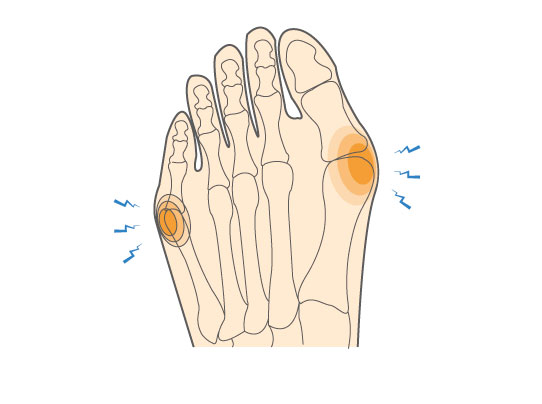The big toe is made up of two joints, those being the interphalangeal (IP) and metatarsophalangeal (MTP) joints. Bunions occur at the MTP joint and take the form of a bulging, bony, and possibly painful, bump.
A bunion, also called hallux valgus, forms when the bones of the big toe move out of alignment and the first metatarsal bone of the foot juts outward, causing the big toe to point inward toward the other toes.


